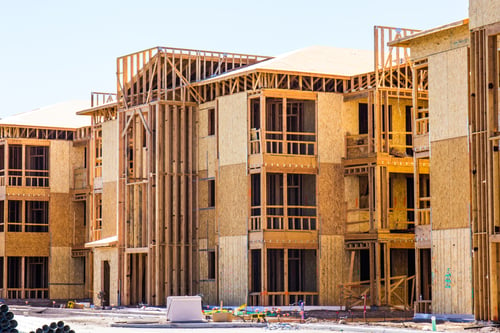National Electrical Code (NEC) / NFPA 70 Compliant Design Solutions
Meet NEC standards with accurate inspections, reviews and designs.
Our industry knowledge and experience nail the codes each and every time!
We deliver in record turnaround times to rule out any possibility of delays.

Any new construction in the USA needs to follow certain standards and codes. Various building components and services have applicable codes that must be followed to get approval or permit for your project. Electricity is responsible for powering the building and the same power can turn hazardous leading to emergencies.
You will often hear contractors discussing about the National Electrical Code or NEC. The set of standards are generally implemented in varied forms across the states in the US. NEC lays outs the codes for safe electrical wiring and sets standards for different electrical equipment and appliances. The goal of the NEC is to create a safe construction which can detect, prevent and mitigate emergencies effectively.
So if your project is located anywhere in the country, you have to comply with NEC. Almost all states except one or two follow the NEC and create implications for new constructions and projects.
New York Engineers offers friendly consultation services for everything related to NEC. We provide NEC inspections for existing constructions, review plans, create code-compliant designs and ensure professional guidance for projects of all sizes. We have an experienced team of engineers who are well-versed with NEC and all local standards. You can take our help and ensure that you never miss a single code, no matter how minute it may be!

The NEC or NFPA 70 is a part of the Fire Codes developed by the National Fire Protection Association (NFPA). The massive set of standards is not a federal law; that means you don't directly need to comply with them. But local building departments in different US states have adopted the codes directly or amended them before implementation. It's not uncommon to find tow states with very different codes.
For instance, one state may mandate the use of metal boxes while others may adopt plastic boxes. Whatever be the differences, you will need to comply with the local version of NEC in your state. This applies to any new construction or work involving existing electrical wiring and components. Some minor work like changing fixtures or switches may not need you to contact the building department. But even if you run a new electrical cable for some service, you should consider the codes.
NEC sets various standards for installing electrical wiring and equipment safely. Buildings which have implemented NEC are much safer from risks of electrical hazards. Whether it's mandatory or not, anyone with good judgment will strive to meet the standards for ensuring the safety of its occupants.
We can help you meet NEC standards and create high-value properties that discourage fires, shorts or sparks!
The NEC has been developed as a part of NFPA's Fire Codes and provides a way for the safe installation of electrical wiring and equipment. The NEC spans over 9 chapters that detail the way to go about when you are dealing with electrical components and systems. Here's a look at some of the things we need to follow so that you know what exactly the NEC involves.
Wiring and Protection
NEC chapter 2 sets the general rules for wiring and protection of conductors. The codes also detail the use and identification of ground conductors and set parameters for identifying terminals and wiring systems. We also find standards for overcurrent protection, grounding and bonding and surge protection devices.
Wiring Methods and Materials
NEC outlines the wiring methods and materials you should use for residential and commercial buildings. The standards deal specifically with cables, conductors, boxes, fittings and raceways. We also choose the type and material of the cable based on the standards listed by NEC. The codes provide details about the installation and restrictions that come with wiring methods.
Violating the wiring rules can cause power quality problems and lead to massive cost.
Equipments for General Use
You need to use components as part of the electrical setup in any building. For example, fixture wires, switches, receptacles, switchboards, control panels and more. NEC also sets the codes for selecting and using various electrical components.
NEC also covers appliances, low-voltage lighting, fixed heating equipment, air-conditioning, refrigerators, motors and capacitors. You will also need to follow the standards outlined for generators and storage batteries.
Special Occupancies
Commercial facilities and buildings have a different set of codes to follow. You need strict standards for hazardous locations where the danger of electrical mishaps are more. NEC lists various zones and classes of locations and provides detailed standards for each location. The standards cover various industries such as commercial garages, bulk storage plants, health care, manufacture, agriculture, film and television and more!
Surprisingly, you also have codes for mobile homes, park trailers and even floating buildings.
Special Equipment
A wide range of special equipment is covered under the NEC. From electric signs and office furnishings to solar photovoltaic systems and fire pumps- everything must comply with NEC. The list also contains industrial equipment like X-Rays, industrial machinery, electrolytic cells, electric welders and fuel cell systems.
Some regular things that we use every day also need to be NEC-compliant. Examples include fountains, swimming pools, elevators, artificially made and natural water bodies.
Special Conditions
The NEC 700-series codes have to do with systems used in special conditions. Some of the systems are part of every building's defense system like fire alarm systems emergency systems. The codes also cover other equipment like energy storage systems, optical fiber cables, direct current microgrids and stand-alone systems.
Communication Systems
Various communication devices we use in the present time needs to be NEC compliant. For example, we have to follow applicable standards for network-powered and premises-powered broadband communication systems and even communication circuits.
The range of codes you need to follow will be decided by your project and environment. What one type of building needs may not be the same that your building will also need. You need professional engineers to figure out the standards that apply to your design, building or project.
We can help you determine the codes that are applicable to your project and create a fully-compliant design. You have complete peace of mind when you work with our team as we ensure strict adherence to requirements and regulations.
We have been a bit technical till now, to be honest! If you are a regular homeowner, you must be thinking how all of these translate in your case. You may be surprised to know that every house needs to comply with NEC.
Some codes apply to your entire house, while some standards are room-specific.
Here are a few implications of NEC for homeowners :
Living Room, Bedroom and Dining
NEC mandates that every room in the house should have a wall switch near the entrance to control ceiling fixture or switched receptacle. The codes also maintain that ceiling fixtures should be controlled by a wall-mounted switch instead of pull chains.
The codes allow a maximum distance of 12 feet between receptacles and each wall should have one. If you have a wall wider than 2 feet between two doors, you need to install a receptacle.
The standards suggest using 15-amp circuits for light fixtures. Receptacles can be accommodated on a circuit with lights while heavy equipment like home theaters and air-conditioners should have their dedicated circuits.
Stairways and Hallways
All hallways and stairways in your house should be well lit with at least one light fixture, according to NEC. You need to install three-way control switches for lights at the top and bottom of your stairs. Hallways can also benefit from a three-way switch.
If your hallway is longer than 10 feet, you should install at least one receptacle.
Kitchen
The NEC outlines the necessary codes for kitchens. Many states allow you to install two 20-amp circuits for small appliances that control GFCI receptacles. Some states also allow 15-amp split circuit receptacles. The codes suggest placing the receptacles above your countertops for easy access.
Appliances like microwave, dishwasher, refrigerator and garbage disposer should have their own circuits. Lights must have their separate 15-amp circuit for safety.
Bathrooms
NEC suggests using GFCI-protected receptacles in wet conditions of your bathroom. Your light fixtures should come with a lens or sealed globe so that they can prevent the entry of moisture. You should have separate circuits for power-heavy appliances like heater, fan or light.
Closet
Closets should have at least one overhead light controlled via a wall switch instead of pull chains. The codes suggest using a globe rather than bare bulb which can get hot and light up clothes, apparels, sheets and cardboard boxes.
Garage
Every attached garage must provide room for at least one receptacle. You will need to install separate receptacles for running utilities like the laundry. The garage should have a proper overhead light controlled by a wall switch. There should be a separate light for the garage door opener for better illumination.
Outdoors
NEC also presents codes to follow for outdoor fixtures and systems. Any standard-voltage wiring should be protected with water-resistant underground feed (UF) cable or conduit. You can also use both if you wish.
Your state will also determine the depth at which you must bury the cables. Outdoor electrical wiring and components should also use waterproof covers and fittings. You will generally not need to follow any codes for low-voltage lighting.
The NEC also sets standards regarding the use and selection of cables, receptacles, fixtures, appliances, circuits, service panels, electrical boxes and wire sizes. We need to follow each standard for creating a structure which stands the test of electrical hazards.
NEC Compliant Housing
Your home deserves to be safe and protected from any sort of hazard. The best way to avoid mishaps and protect your family is to design your house and electrical systems according to NEC standards. We help you create a safe haven for your family with our code-compliant design service. If your current house violates NEC, we can assist you to track down the discrepancies and take corrective measures.

New York Engineers has a team of expert engineers who work with NEC day-in and day-out. We can review your wiring and electrical systems to determine whether it complies with NEC. Our keen-eyed inspectors can spot any non-compliance efficiently and help you correct your errors. We have a team of adept designers who can draft NEC-compliant designs so that your construction never receives a stop-work notice.
You can use our designs with full confidence and be sure of the success of your project. Working with us means no penalties and ensuring a safe construction free from electrical hazards and vulnerabilities. We follow NEC standards strictly and incorporate best practices from the industry for maximum safety and performance. You can hire our designing and inspection service as a stand-alone option or ensure full compliance in case of new building design.
We also review existing plans and draw up new drawings with corrections of code violations. You can work with our approved contractors for any new or corrective job for quality results. Our team has helped several clients give shape to their projects with success.
We know the NEC by heart and implement it every day as a part of our work. Our engineers stay on top of all NEC revisions and local amendments so that you never miss the target. So if you are looking for excellent professional help and guidance, think of us!
Get in touch with our team to know more about our NEC and related services.